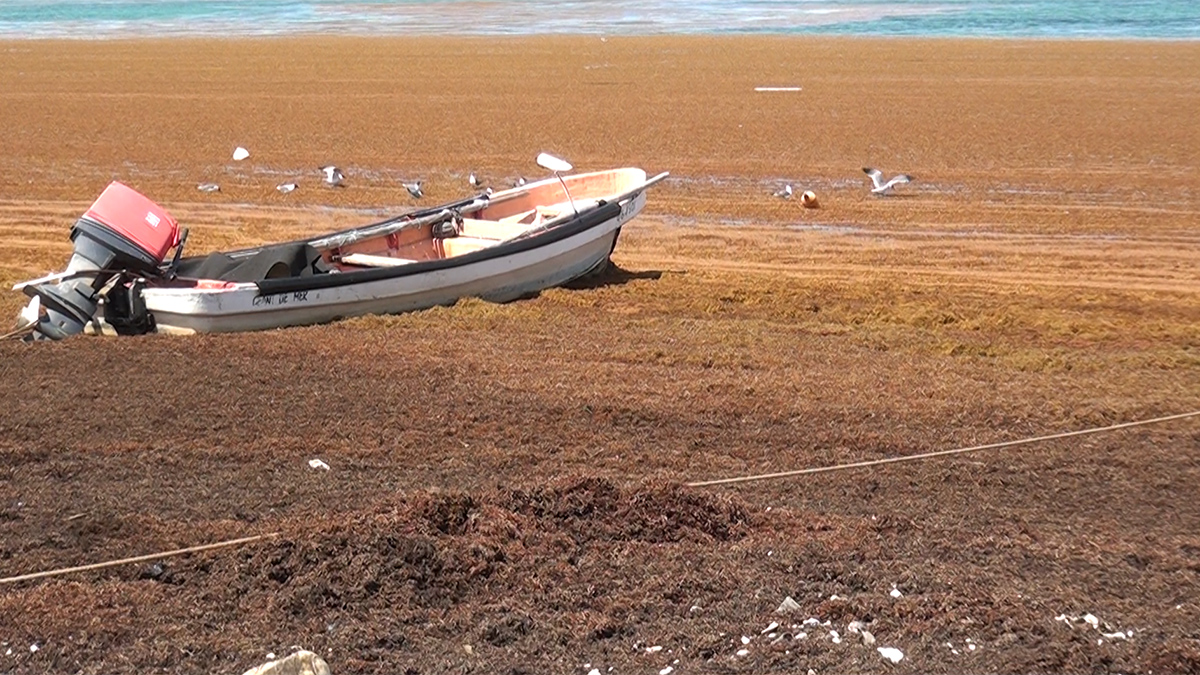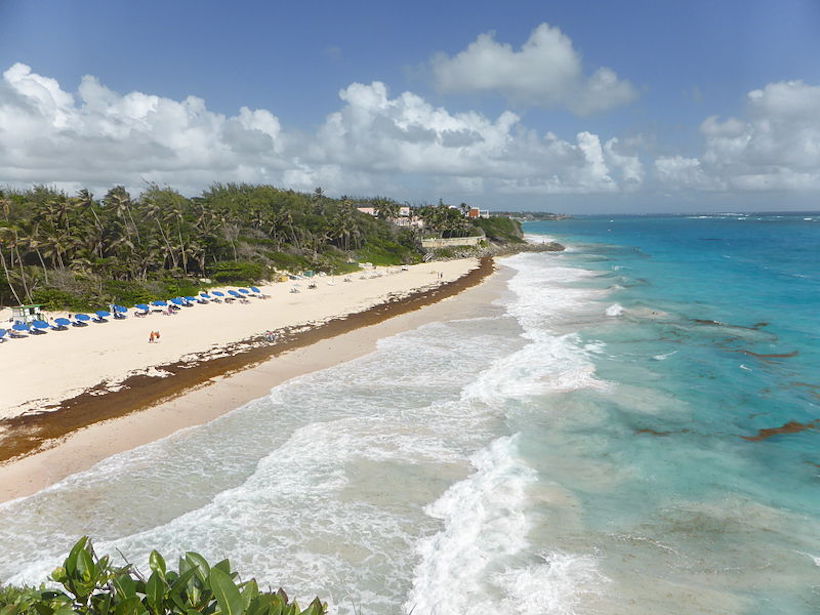The complexity of modeling the tropical Atlantic makes identifying the source of the ongoing seaweed blooms difficult.
sargassum
هل يمكن لغمر الأعشاب البحرية أن يبرّد المناخ؟.
يمكن للأعشاب البحرية المغمورة أن تخزّن الكربون في قاع المحيط، ولكن يظل من غير الواضح مدى فاعلية هذه الاستراتيجية، وكيف ستؤثر على صحة المحيط.
Can Submerging Seaweed Cool the Climate?
Submerged seaweed can store carbon at the bottom of the ocean, but how effective the strategy will be—and how it will affect ocean health—remains unclear.
Saint Lucia Works to Release Itself from Sargassum’s Stranglehold
Nearly 10 years ago, Caribbean beaches experienced a sudden onslaught of Sargassum. Today residents continue to explore ways to mitigate the seaweed’s damage to local health and livelihoods.
Sunlight Stimulates Brown Algae to Release Organic Carbon
Sargassum and other brown algae might be an underappreciated contributor of organic compounds called polyphenols to the open ocean.
Satellite Data Reveal Growth and Decline of Sargassum
High nutrient levels in 2018 resulted in a nearly 9,000-kilometer belt of Sargassum, a seaweed critical to many marine animals but also a nuisance when it washes up on shorelines, new results reveal.
Sargassum Watch Warns of Incoming Seaweed
The Sargassum Watch System processes satellite data and feeds results to a Web portal, giving decision makers timely information on seaweed location and warnings for potential beaching events.







